Premium Only Content
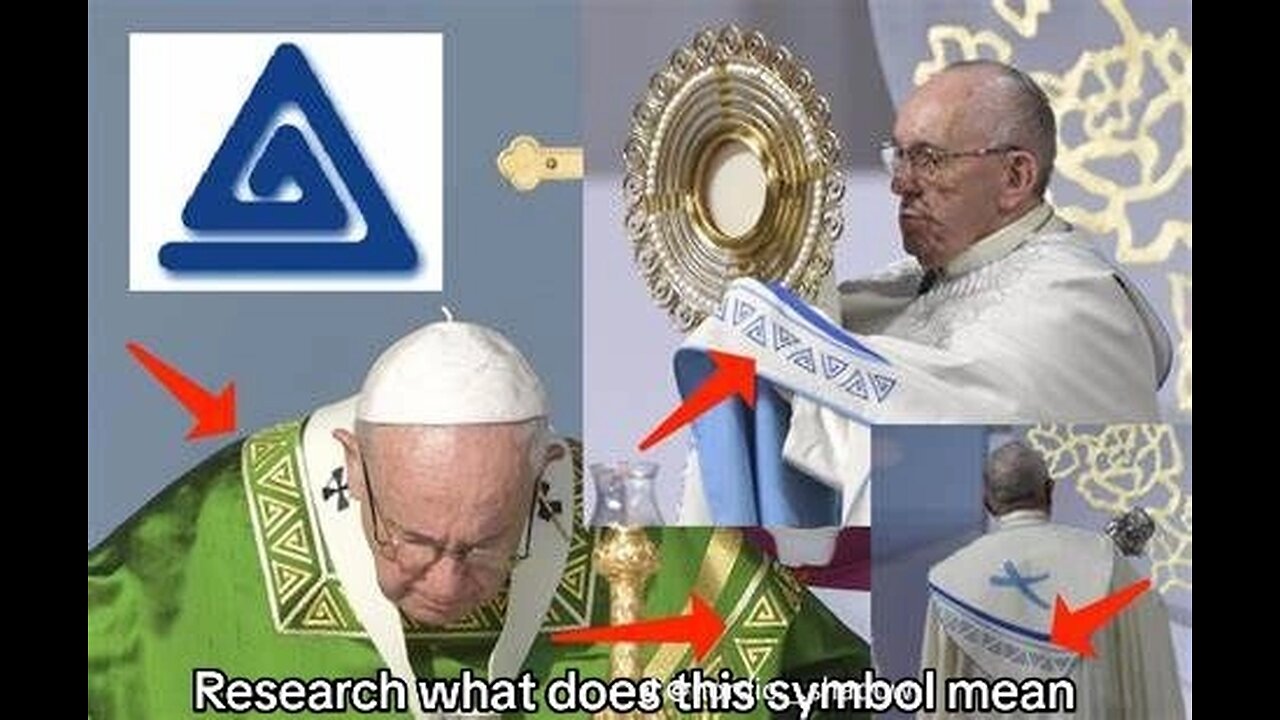
The Vatican Unveiled: A Deep Dive into the Papacy, Paganism, and the Enduring Empire of Rome
#### **Introduction: The Eternal Rome and the Papal Throne**
The Vatican, cloaked in religious authority and shrouded in centuries of tradition, is often perceived as the beating heart of global Christianity. However, beneath the surface of its ornate rituals and towering basilicas lies a more complex and esoteric reality—one that traces its roots back to the ancient pagan religions of Rome. The claim that "Rome never died; it became the Vatican" suggests that the papacy, far from being a mere spiritual office, is the continuation of the Roman Empire in ecclesiastical form. This article explores the deep connections between the Vatican, ancient Rome, and the persistent influence of pagan traditions, revealing a hidden history that challenges the very foundations of the modern religious landscape.
#### **I. The Pope: Emperor of the Spiritual World and Heir to Roman Power**
**The Papacy: A Spiritual Empire**
The Pope, traditionally seen as the Vicar of Christ on Earth, holds a position of immense spiritual authority over the Catholic Church. However, the title "Pope" carries with it a legacy far older than Christianity itself. The assertion that the Pope is the "emperor of Rome" suggests that the papacy is more than just a spiritual office; it is the modern embodiment of the ancient Roman imperium—a continuation of the power that once ruled the known world.
Historically, the transformation from a Roman emperor to a papal leader was not a sudden change but a gradual evolution. As the Western Roman Empire crumbled in the 5th century, the Bishop of Rome—later known as the Pope—began to fill the power vacuum left by the decline of secular authority. The Church, which had already begun to assimilate various pagan rituals and symbols, emerged as the central authority in the West, wielding both spiritual and temporal power. This shift was not merely about the continuation of Roman administration; it was about the preservation and transformation of Roman religious and cultural hegemony under a new guise.
**The Pope as Pontifex Maximus**
One of the most telling aspects of this transformation is the title "Pontifex Maximus," which the Pope inherited from the ancient Roman emperors. Originally, the Pontifex Maximus was the high priest of the College of Pontiffs in Rome, responsible for overseeing religious rituals and maintaining the pax deorum—the peace between the gods and the state. The adoption of this title by the papacy is symbolic of the continuity between the old Roman religion and the new Christian order, suggesting that the Pope, like the emperors before him, is the ultimate mediator between the divine and the earthly realms.
This blending of roles—emperor and high priest—positions the Pope not just as a religious leader but as the inheritor of the ancient Roman authority, now exercised through the spiritual empire of the Church. This duality is crucial to understanding the Vatican’s true nature as both a religious and political entity, with deep roots in the pagan traditions of ancient Rome.
#### **II. The Vatican: A Sanctuary of Hidden Paganism**
**The Vatican's Pagan Architecture**
The Vatican is often revered for its architectural splendor, with St. Peter’s Basilica standing as one of the most iconic buildings in the world. However, a closer examination of the Vatican’s layout reveals a tapestry of symbols and structures that trace their origins back to pagan Rome and even further, to the ancient mysteries of Egypt.
The obelisk at the center of St. Peter’s Square is a prime example. Originally erected in Heliopolis, Egypt, as a symbol of the sun god Ra, the obelisk was transported to Rome by Emperor Caligula and later re-erected by Pope Sixtus V in 1586. The presence of this ancient Egyptian symbol at the heart of the Vatican is not merely decorative; it is a deliberate continuation of the solar worship that was central to both Egyptian and Roman religious practices.
The obelisk, a phallic symbol representing the sun’s rays, is surrounded by a circular colonnade designed by Gian Lorenzo Bernini—a layout that many interpret as representing the union of the masculine and feminine, the earthly and the divine. This alignment mirrors the ancient Roman practice of integrating various deities and their symbols into the state religion, ensuring their continued veneration under a Christianized form.
**The Solar Cult in Christianity**
The transformation of pagan symbols into Christian ones did not stop at architecture. The shift from the Sabbath (Saturday) to Sunday, as highlighted in the video, is another example of how pagan practices were absorbed into Christian worship. Sunday, the "venerable day of the sun," was originally dedicated to the worship of the sun god, Sol Invictus, a deity who enjoyed great popularity in the Roman Empire.
Emperor Constantine, who played a pivotal role in the Christianization of the Roman Empire, officially recognized Sunday as a day of rest in 321 AD, aligning it with the day of Christ’s resurrection. This change was not merely administrative; it was a theological fusion of Christian and pagan elements, designed to make the new religion more palatable to a Roman population steeped in solar worship.
The video’s claim that the Vatican continues to venerate the sun god through its structures and rituals is further supported by the presence of the solar wheel, or sun cross, a symbol found throughout the Vatican and in many Christian churches. This symbol, originally associated with solar deities, has been reinterpreted within Christianity as a representation of Christ’s victory over death—yet its pagan origins remain unmistakable.
#### **III. The Sabbath Controversy: Rewriting Divine Law?**
**The Sabbath Shift: A Political and Theological Move**
The change of the Sabbath from Saturday to Sunday is one of the most significant alterations in Christian practice, and it raises profound theological questions. The Sabbath, as ordained in the Old Testament, is the seventh day of the week—a day of rest that reflects God’s own rest after the creation. However, the decision to observe Sunday instead was rooted in the desire to distinguish Christianity from Judaism and to align the new religion with the existing Roman customs.
The video’s suggestion that this shift represents an elevation of man’s authority over God’s law is a provocative one. It implies that the Church, in changing the Sabbath, assumed a level of authority that transcends even the divine commandments, effectively placing the Pope in a position of ultimate power over religious doctrine. This act can be seen as a continuation of the Roman tradition of emperor worship, where the ruler was often deified and regarded as the ultimate lawgiver.
**Esoteric Interpretation: The Symbolic Meaning of the Sabbath**
From an esoteric perspective, the shift from Saturday to Sunday represents more than just a change in worship day—it symbolizes a deeper spiritual transformation. Saturday, governed by the planet Saturn, is traditionally associated with limitations, discipline, and the material world. In contrast, Sunday, governed by the sun, represents illumination, divine authority, and spiritual awakening.
The Church’s decision to emphasize Sunday over Saturday can be interpreted as a shift from the restrictive, law-bound spirituality of the Old Testament to the more expansive, grace-filled theology of the New Testament. However, this shift also reflects the absorption of solar worship into Christian practice, blurring the lines between the old pagan rituals and the new Christian faith.
#### **IV. The Vatican's Continuation of Roman Imperial Power**
**Rome’s Transformation into the Vatican**
The idea that "Rome never died" and instead became the Vatican suggests that the fall of the Roman Empire was not the end of Rome’s influence but a metamorphosis. The Vatican, as the center of the Catholic Church, inherited not only the religious authority of ancient Rome but also its political ambitions and imperial structures.
During the Middle Ages, the Papacy wielded immense power over European monarchs, often acting as the ultimate arbiter in political disputes and even crowning emperors. The concept of the Holy Roman Empire, which sought to revive the glory of ancient Rome under Christian auspices, is a testament to the enduring influence of Rome’s imperial ideology. The Vatican, as the spiritual successor to Rome, continued to project its power across the continent, shaping the course of European history through its control over both spiritual and temporal matters.
**The Vatican as the Spiritual Rome**
The transformation of Rome into the Vatican can also be seen in the continuation of Roman legal and administrative traditions within the Church. Canon law, the legal system of the Catholic Church, is deeply rooted in Roman law, reflecting the Church’s role as the inheritor of Rome’s legal and moral authority. The Pope, as the ultimate interpreter of this law, holds a position akin to that of the Roman emperor—a ruler who exercises supreme authority over both the Church and, by extension, the moral order of the world.
The Vatican’s global influence, exercised through its diplomatic corps, its control over vast financial resources, and its leadership of over a billion Catholics, makes it a modern-day empire in its own right. The Church’s mission to evangelize the world, bringing all nations under its spiritual authority, echoes the imperial ambitions of ancient Rome, which sought to bring the entire known world under its rule.
#### **V. The Esoteric and Occult Dimensions of the Vatican**
**The Vatican’s Occult Symbolism**
The Vatican’s architecture, rituals, and symbols are rich with esoteric and occult meanings that reveal its deep connections to ancient mystery traditions. The obelisk, the dome, and the layout of St. Peter’s Square are not just expressions of Christian faith but are also laden with symbols that trace their origins to ancient Egypt, Rome, and the broader Mediterranean world.
The presence of these symbols suggests that the Vatican serves as a repository of ancient wisdom, preserving and perpetuating the knowledge of the mystery schools that once flourished in the temples of Egypt and the sanctuaries of Greece. This hidden tradition, passed down through the ages, continues to influence the spiritual and temporal policies of the Vatican, suggesting that the Church’s public teachings are only the surface of a deeper, more complex spiritual reality.
**The Obelisk and the Solar Worship**
The obelisk at the center of St. Peter’s Square is one of the most striking examples of the Vatican’s connection to ancient occult practices. Obelisks are traditionally associated with the worship of the sun god Ra in Egyptian religion, representing the phallic symbol of divine creation and the connection between heaven and earth. The fact that this ancient pagan symbol stands at the heart of the Vatican raises intriguing questions about the continuity of solar worship within the Church.
The obelisk is surrounded by a circular colonnade, which many interpret as a solar disc, reinforcing the idea that the Vatican continues to venerate the sun, albeit in a Christianized form. The alignment of the obelisk with the basilica, the papal throne, and the broader layout of the Vatican City reflects a deep understanding of cosmic principles, suggesting that the Church’s rituals are designed to harness and channel the energies of the sun and other celestial bodies.
**The Dome and the Feminine Divine**
The dome of St. Peter’s Basilica, like many other domes in Christian architecture, can be seen as a symbol of the feminine divine—a representation of the womb of the goddess, the source of life and creation. In this interpretation, the Vatican’s most sacred space is a microcosm of the cosmos, with the dome representing the heavens and the altar below representing the earth.
This esoteric symbolism reflects the influence of the ancient mystery traditions, which often emphasized the balance and union of masculine and feminine principles as the foundation of creation. The incorporation of these symbols into Christian architecture suggests that the Church, while publicly promoting a patriarchal theology, privately acknowledges and venerates the feminine divine in its most sacred spaces.
**The Hidden Teachings of the Vatican**
Beyond its public face, the Vatican is rumored to be the custodian of vast esoteric knowledge, much of which is kept hidden from the general populace. The Vatican Library and Secret Archives are said to contain texts and artifacts that reveal the Church’s deep connections to ancient mystery religions, alchemy, astrology, and other occult sciences.
These hidden teachings are believed to include knowledge about the true nature of the cosmos, the human soul, and the divine. Some speculate that the Vatican’s esoteric knowledge extends to the manipulation of spiritual and physical energies, allowing the Church to maintain its influence over the spiritual and temporal realms.
**The Occult Influence on Papal Rituals**
The rituals of the Vatican, particularly those performed by the Pope, are steeped in symbolism that goes beyond their surface meaning. The use of incense, the lighting of candles, the wearing of specific colors, and the precise timing of ceremonies are all designed to align the Vatican with cosmic forces and to invoke the presence of divine entities.
These rituals can be understood as forms of high magic, where the Pope, as the Pontifex Maximus, acts as the mediator between the human and the divine. Through these rituals, the Vatican not only maintains its spiritual authority but also reinforces its connection to the ancient traditions that predate Christianity.
**The Vatican and the Global Esoteric Network**
The Vatican’s influence is not confined to the spiritual realm; it is also a key player in the global network of esoteric and occult organizations. The connections between the Vatican and various secret societies, such as the Freemasons, the Jesuits, and the Knights Templar, have been the subject of much speculation and investigation.
These organizations, which often trace their origins back to the ancient mystery schools, are believed to share a common goal of preserving and advancing esoteric knowledge. The Vatican’s involvement in this network suggests that the Church is not merely a religious institution but a central node in a global web of power that spans politics, finance, and spirituality.
#### **VI. The Vatican’s Role in Global Control: A Spiritual Empire**
**The Vatican as a Global Power**
The Vatican’s influence extends far beyond its spiritual authority over the Catholic Church. As an independent city-state with its own diplomatic corps, financial system, and intelligence network, the Vatican wields significant power on the global stage. Its ability to influence world events through its moral authority, its control over vast financial resources, and its network of loyal followers makes it a unique and formidable player in international affairs.
The Vatican’s role in global control can be understood as the continuation of Rome’s imperial ambition, now expressed through spiritual and ideological means rather than military conquest. The Pope, as the spiritual leader of over a billion Catholics, has the power to shape the beliefs, values, and actions of a significant portion of the world’s population, making the Vatican a key player in the battle for global influence.
**The Vatican and the New World Order**
The concept of a New World Order—a centralized global government that controls all aspects of human life—has been a topic of conspiracy theories for decades. Some believe that the Vatican is deeply involved in the creation of this New World Order, using its spiritual authority and global influence to promote a vision of a unified world under a single, all-powerful government.
This vision is often seen as a continuation of the Roman Empire’s ambition to rule the known world, now reimagined in a modern context. The Vatican’s involvement in international organizations such as the United Nations, its influence over global financial institutions, and its connections to powerful secret societies all suggest that the Church is a key player in the establishment of a new global order.
**The Esoteric Agenda of the Vatican**
The Vatican’s involvement in global affairs is not merely a matter of politics; it is also driven by an esoteric agenda. The Church’s rituals, symbols, and teachings are designed to align humanity with specific cosmic forces and to guide the spiritual evolution of the planet.
Some believe that the Vatican’s ultimate goal is the establishment of a new spiritual order, where the Church, as the custodian of ancient wisdom, will lead humanity into a new era of enlightenment. This esoteric agenda is said to involve the manipulation of spiritual energies, the control of human consciousness, and the gradual revelation of hidden truths that will transform the world.
**The Vatican’s Influence on Global Consciousness**
The Vatican’s power is not just political or spiritual; it is also psychological. Through its teachings, rituals, and symbols, the Church shapes the beliefs, values, and behaviors of billions of people around the world. This influence extends to the collective consciousness of humanity, guiding the spiritual evolution of the planet.
The Vatican’s role in shaping global consciousness can be seen as the continuation of Rome’s cultural and ideological dominance, now expressed through spiritual and esoteric means. The Church’s teachings on morality, ethics, and the nature of reality have a profound impact on how people perceive the world and their place in it, making the Vatican a central force in the evolution of human consciousness.
#### **VII. Conclusion: The Vatican as the Eternal Rome**
The Vatican, far from being a mere relic of the past, is a living embodiment of the ancient Roman Empire, carrying forward its traditions, symbols, and ambitions into the modern world. The Pope, as both the spiritual leader of the Catholic Church and the heir to the Roman emperors, wields a power that transcends mere religion, extending into the realms of politics, finance, and global consciousness.
The Church’s architecture, rituals, and teachings are steeped in esoteric and occult symbolism, revealing its deep connections to the ancient mystery traditions that once flourished in Rome, Egypt, and beyond. These symbols and rituals, while publicly presented as Christian, are also rooted in the pagan traditions that the Church absorbed and transformed over the centuries.
The Vatican’s influence on global affairs, its role in shaping human consciousness, and its involvement in the creation of a New World Order all suggest that the Church is not just a religious institution but a central player in a global esoteric network that seeks to guide the spiritual evolution of the planet.
As the inheritor of Rome’s imperial legacy, the Vatican stands as a testament to the enduring power of symbols, rituals, and beliefs in shaping the course of history. Whether seen as a beacon of spiritual light or as the custodian of hidden knowledge, the Vatican continues to play a crucial role in the unfolding drama of human civilization, guiding the world towards an uncertain future with the wisdom of the ages in its grasp.
-
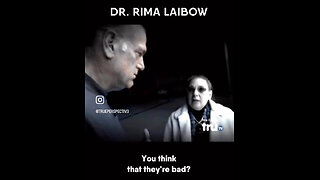 1:29
1:29
FragmentsOfTruth
3 days agoImpending Crisis? The Debate Over Compulsory Vaccination and Sterility Claims
1341 -
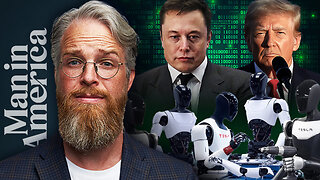 1:03:41
1:03:41
Man in America
17 hours agoAre Trump & Musk the COUNTER-ELITES? w/ Derrick Broze
84.3K44 -
 3:45:08
3:45:08
DLDAfterDark
8 hours ago $10.77 earnedDLD Live! SHTF Handguns! Which Would You Choose?
46K2 -
 1:50:38
1:50:38
Mally_Mouse
11 hours agoSaturday Shenanigans!! - Let's Play: Mario Party Jamboree
55.8K -
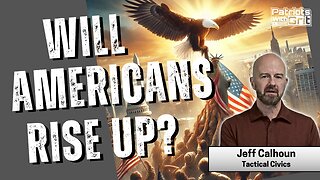 1:13:00
1:13:00
Patriots With Grit
15 hours agoWill Americans Rise Up? | Jeff Calhoun
46.2K13 -
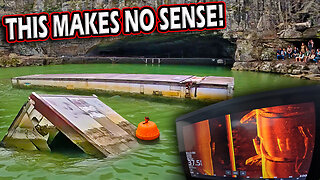 14:55
14:55
Exploring With Nug
15 hours ago $11.56 earnedWe Found Semi Truck Containers While Searching for Missing Man!
62K9 -
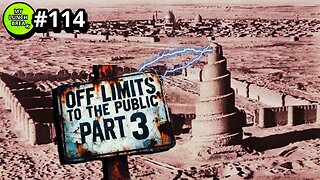 27:57
27:57
MYLUNCHBREAK CHANNEL PAGE
23 hours agoOff Limits to the Public - Pt 3
142K66 -
 38:07
38:07
Michael Franzese
15 hours agoLeaving Organized Crime and Uncovering Mob in Politics: Tudor Dixon and Michael Franzese
111K15 -
 2:42:54
2:42:54
Jewels Jones Live ®
2 days agoAMERICA IS BACK | A Political Rendezvous - Ep. 111
86.9K50 -
 8:47:33
8:47:33
Due Dissidence
1 day agoLIVE: Workers Strike Back Conference ft. Chris Hedges, Jill Stein, Kshama Sawant, and More!
123K92